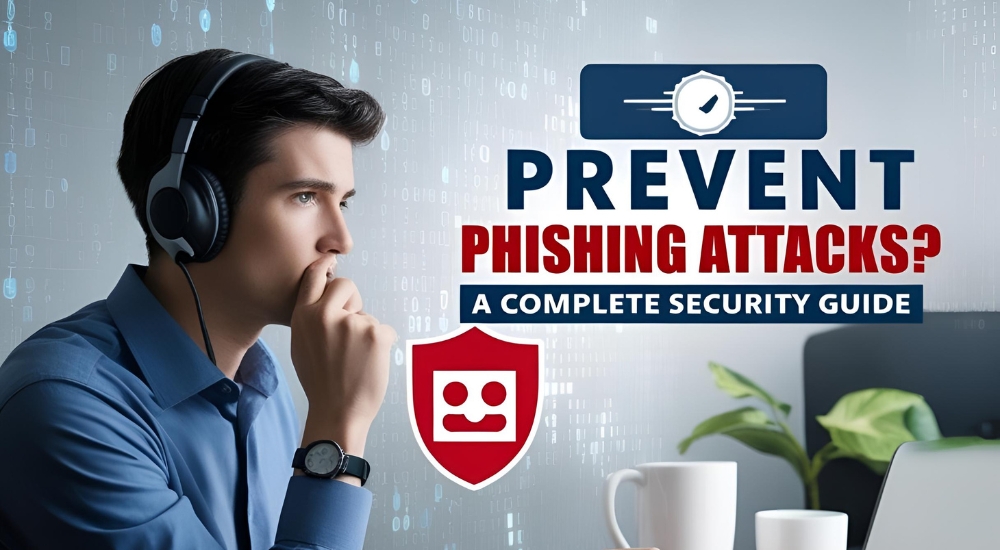Phishing attacks continue to be a major cybersecurity threat, tricking users into revealing sensitive information through deceptive emails, websites, and messages. With cybercriminals constantly evolving their techniques, it’s crucial to stay informed and adopt robust security measures. This guide provides the latest 2025 research-based strategies to help individuals and businesses prevent phishing attacks effectively.

What is Phishing?
Phishing is a social engineering attack where cybercriminals impersonate legitimate entities to deceive users into providing login credentials, financial information, or personal data. Attackers use various channels, including emails, text messages, fake websites, and phone calls, to lure victims into their traps.
For a detailed explanation of phishing types, check out this comprehensive guide on phishing attacks.
Common Types of Phishing Attacks
Understanding the different types of phishing can help you identify and mitigate risks. Here are some common phishing techniques:
1. Email Phishing
Attackers send fake emails impersonating trusted entities like banks, government agencies, or online services. These e -mails contain malicious links or attachments that steal the user information.
How to prevent email phishing?
- Always check e -mail transmitters before clicking on the link.
- Use e-mail filtering tool to detect suspicious messages.
- Never download attachments from unknown sources.
2. Spear Phishing
This is a targeted phishing attack aimed at specific individuals or organizations. Cybercriminals gather personal information to craft highly convincing messages.
How to protect against spear phishing?
- Enable Multifactor authentication (MFA) to prevent unauthorized access.
- Train employees to recognize phishing attempts.
- Monitor emails for unusual requests, especially involving money transfers or sensitive data.
3. Whaling Attacks
Whaling is a form of phishing targeting high-profile individuals such as CEOs, executives, and government officials.
Best practices to prevent whaling attacks:
- Use e -mail approval protocols such as SPF, DKIM and DMARC.
- Verify requests for sensitive data through multiple communication channels.
- Educate executives about phishing threats and cybersecurity awareness.
For an in-depth guide on spear phishing and whaling, visit this cybersecurity resource.
4. Vishing (Voice Phishing)
Vishing involves attackers using phone calls to trick victims into revealing confidential information.
How to stop vishing attacks?
- Never share personal or financial information over the phone unless verified.
- Be careful with immediate requests from banks or IT support.
- Report suspicious calls to your cybersecurity team or authorities.
5. Smishing (SMS Phishing)
Smishing is similar to email phishing but is conducted via SMS or messaging apps.
How to prevent smishing?
- Avoid clicking on unknown links sent via SMS.
- Verify messages from financial institutions by calling them directly.
- Use mobile security apps to detect fraudulent messages.

Latest Strategies to Prevent Phishing Attacks (2025)
1. Implement Advanced Email Security Measures
Email remains the most common phishing attack vector. Organizations must use AI-powered email security tools to detect phishing attempts.
Key security measures:
- Use AI-driven email scanning tools like Proofpoint or Microsoft Defender.
- Configure email authentication protocols (SPF, DKIM, DMARC).
- Educate employees on recognizing phishing emails.
2. Enable Multi-Factor Authentication (MFA)
MFA provides an additional security layer by requiring a second form of verification.
- Use biometric authentication or one-time passwords (OTP).
- Ensure critical accounts have MFA enabled.
- Consider hardware security keys for enhanced protection.
3. Deploy Web Filtering and Anti-Phishing Software
Phishing sites often trick users into entering credentials.
How to protect against fake websites?
- Use secure web gateways to block malicious sites.
- Install anti-phishing browser extensions like Netcraft.
- Verify URLs before entering credentials.
For recommended anti-phishing tools, visit this cybersecurity solutions page.
4. Regular Cybersecurity Awareness Training
Human error is the biggest cybersecurity risk. Organizations should conduct regular phishing simulations and training.
Training topics include:
- How to identify phishing emails and messages.
- What to do when receiving suspicious communications.
- Reporting phishing attempts to IT security teams.
For a list of top cybersecurity training courses, check out this learning hub.
5. Use AI and Machine Learning for Threat Detection
AI-driven security solutions can detect phishing attempts in real-time.
Latest AI security tools (2025):
- Google Cloud Security Command Center for risk analysis.
- Microsoft Defender AI for phishing detection.
- Darktrace Cyber AI for proactive threat intelligence.
6. Monitor and Report Phishing Attempts
If you suspect the Phishing attack, you must report it immediately.
Where to report phishing?
- Google Safe Browsing: Report Phishing Page
- Federal Trade Commission (FTC): FTC Report Phishing
- Cybersecurity & Infrastructure Security Agency (CISA): CISA Phishing Reporting
Final Thoughts
Preventing phishing attacks requires a combination of awareness, security tools, and best practices. By implementing multi-factor authentication, email security measures, and AI-based threat detection, individuals and organizations can significantly reduce the risk of phishing attacks.
Stay updated with the latest cybersecurity trends and best practices by exploring leading cybersecurity blogs.
For more advanced phishing prevention strategies, check out this official cybersecurity guide.
One thought on “How to Prevent Phishing Attacks? A Complete Security Guide (2025)”